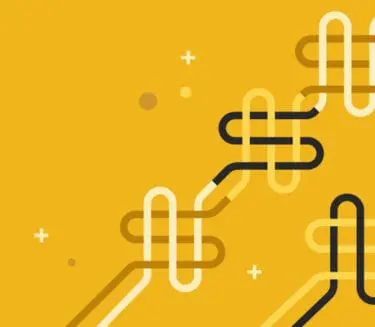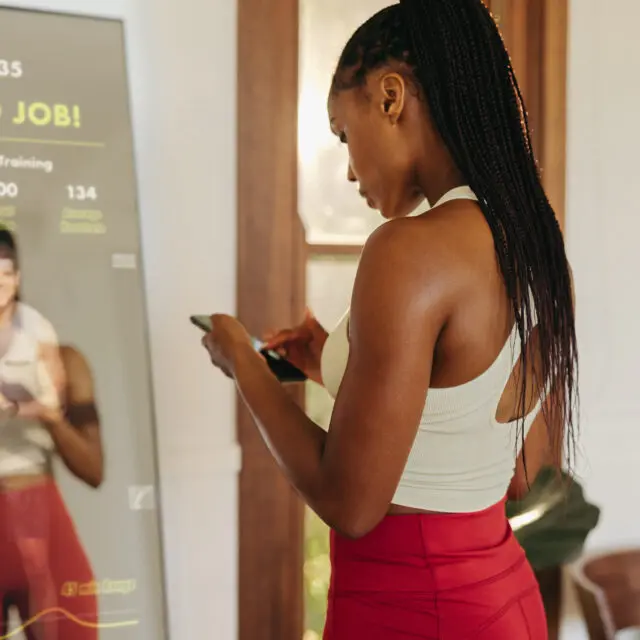Looking back on the past 12 months, several events have prompted the world to re-assess how we think about consumer trust, business operations and government policy.
In 2021, supply chains – already facing all-time high demand – were further hamstrung by major weather events, rising COVID-19 cases shuttering raw materials and manufacturing industries globally, and even a Suez Canal blockage, halting 12% of global shipping for 6 days. Canadian consumers and businesses continue to feel the reverberations of these supply chain disruptions.
Meanwhile, multi-national corporations and governments faced continued calls for accountability in environmental, social and governance practices. Conscientious consumers demanded businesses and government alike do more for labour and racial justice, environmental and economic policies, and more.
And in the financial world, retail investors manifested their power through investments in stocks spurred by social media discussion, upending conventional traders and platforms and flaring tensions among investors, lawmakers and regulators.
Despite these challenges and tensions, the country also banded together against a common threat to humanity: an ongoing pandemic. Large pharma companies, public stakeholders and organizations beyond the health sector rallied to mass produce, store, and roll out COVID-19 immunization to the public, breathing hope into the social and economic landscape once more.
These examples illustrate how we are all connected at the individual, institutional, and societal levels. They also show how private and public sector entities must work together to create fair and transparent conditions for individuals and businesses to thrive.
The volatility and uncertainty of 2021 will only continue into this year. Disruption is an inevitable reality, one that intensifies the urgency to accelerate innovation and new business models. Here, several Interac leaders give their take on what should be on the agenda in 2022 for Canada to evolve successfully.
Harnessing Strategic Foresight for Our Collective Future
Kashmera Self, AVP, Strategy & Emerging Solutions Delivery
A typical way to plan for the future is to take into account present-day considerations, review data, then project the expected outcome, with a generally agreed-upon margin of error. In short, forecasting is about predicting with some measure of certainty.
Foresight, on the other hand, is based on the premise that the future is anything but predictable – a reality that the past two years especially have reinforced. It’s about ensuring preparedness, so your organization and industry steer toward a desired future, even in the face of disruption. By detecting and monitoring weak signals (early indications of change), trends, and forces, you can identify various plausible scenarios and how actions today may influence how they unfold in the future.
We continue to see exponential growth in digital technologies. A 2017 report indicated there will be more than 125 billion connected devices by 2030. This number is likely even higher today following the ramp up of digital adoption over the past two years. The amount of data, in the zettabytes, we will generate through our use of these devices will be staggering.
When properly transformed, this growing wealth of data has incredible power for personal and social good, from helping people with physical limitations manage their household through the use of sensors, to giving lenders a full picture of a borrower so they’re treated fairly, to supporting in significant policy decisions. We can uncover trends through market sensing and conventional sources such as academic journals, industry publications, patent filings and the like, but also unconventional sources such as Drip and Discord. How we collect, share, and treat data to detect weak signals early on has implications with foresight into all human activity in how we live, work, and play and for many years to come.
Data is dynamic, where new information is constantly added and therefore changing its state. Today, organizations who have the most data are the ones who can reap the rewards. The more data, the bigger the reward, because it makes the original data sets even more valuable. This only further empowers those organizations, creating a less competitive market.
For this reason, data needs to be treated as public good (barring, of course, personal data with its corresponding consumer data rights). We need policymakers to look at data through this lens of public good. Understanding how disruptive technologies will manifest through changes in human activities with broad social implications such as how we identify and connect to each other, how we make sense of our world and make collective decisions, and how we relate to each other and the environment in which we live. All of which can help industry, academia, and policy makers understand to act in the present while preparing for the future.
For far too long, Canada has been a nation of bystanders, looking for cues from other jurisdictions, teetering on the precipice of change. However, we also have a culture of openness and acceptance, which can yield significant opportunity. Using emerging technologies for better foresight will prepare us for a more competitive future, and become pathfinders in creating a competitive environment to the success of our nation.
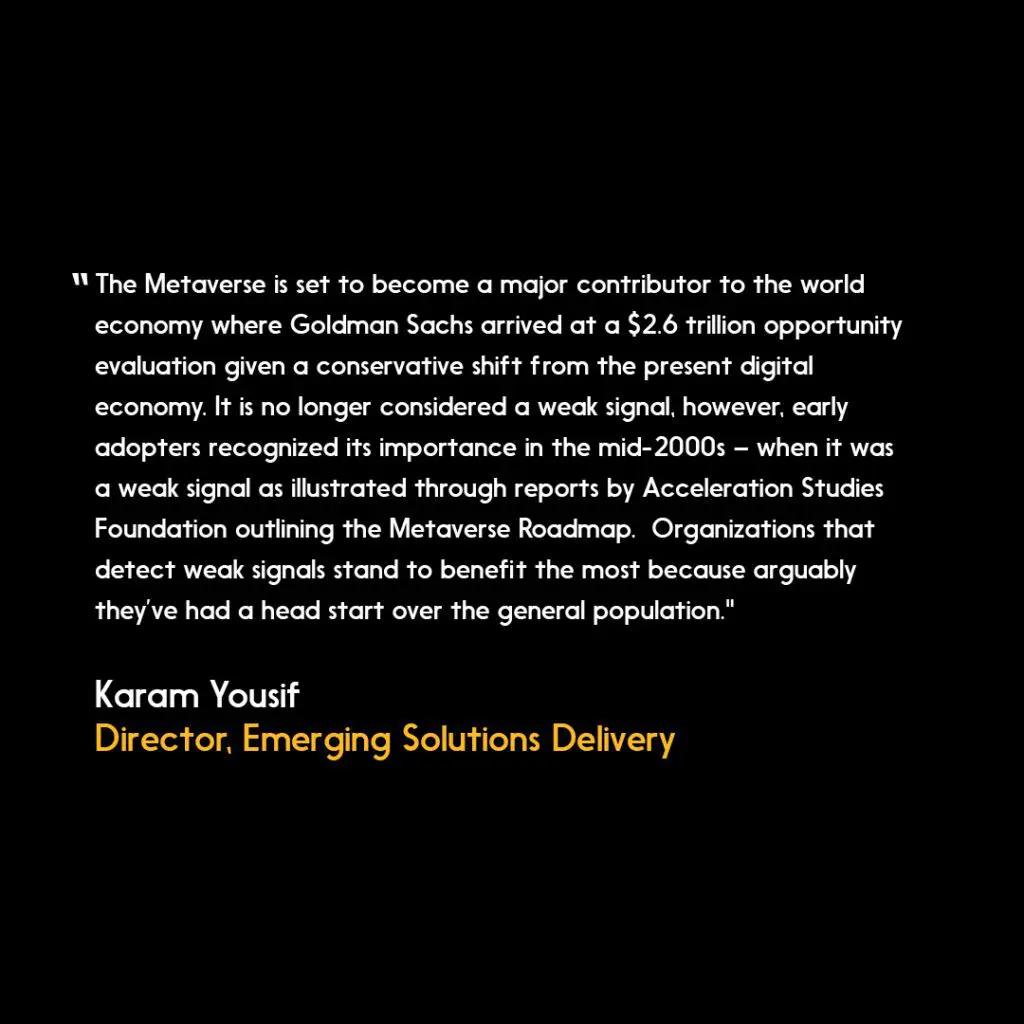
Evolving Regulation Beyond “Set and Forget”
Phil Pellegrini, AVP, Regulation & Innovation
As evolving digital innovation keeps disrupting how we interact with each other, digital ecosystems, and entire economies, the regulatory costs of doing business have never been higher, and they’re increasing at an alarming rate. Time and resources once allocated to building products that delight customers are now far too often spent on trying to understand new rules or making sense of the regulatory patchwork.
Industry analysts and thought leaders submit that laws, regulations, and rules in the form of ancillary guidance seem to be ever expanding and are very rarely dialed back. In other words, outdated regulations and legacy red tape acts as a form of taxation on corporations. This is true in financial regulation, where some existing regulatory frameworks long pre-date the 2007 financial crisis – the same year Steve Jobs’ revolutionary iPhone debuted and the way we use technology day-to-day changed forever.
However, how do we find the appropriate balance between effective and thoughtful regulation without hindering innovation or the allure of progress? Is the solution to move from a prescriptive and rules-based regulation to a data-driven and principles-based regulation? The answer to this is, of course, a matter of opinion.
The good news is that regulatory reform efforts seem to be underway. According to a recent OECD publication, we are currently rethinking rulemaking through the lenses of international regulatory co-operation and, more importantly, greater stakeholder engagement. Many policymakers and regulators are slowly changing their mindset from a “set and forget” to a “learn and adapt” model.
For scaling innovation to take root in Canada, we need greater transparency, and candid dialogue between all stakeholders, including governmental bodies and private companies, and other industry actors. Fortunately, a number of these new proactive and cooperative partnerships are already gaining momentum.
As we continue to contend with the pandemic’s impact on our economy and society, it is an opportune time to rethink our existing regulatory frameworks and resetting the regulatory balance to prevent stifling innovation. As E. A. Bucchianeri told us in her novel Brushstrokes of a Gadfly, “it was not curiosity that killed the goose who laid the golden egg, but an insatiable greed that devoured common sense.”
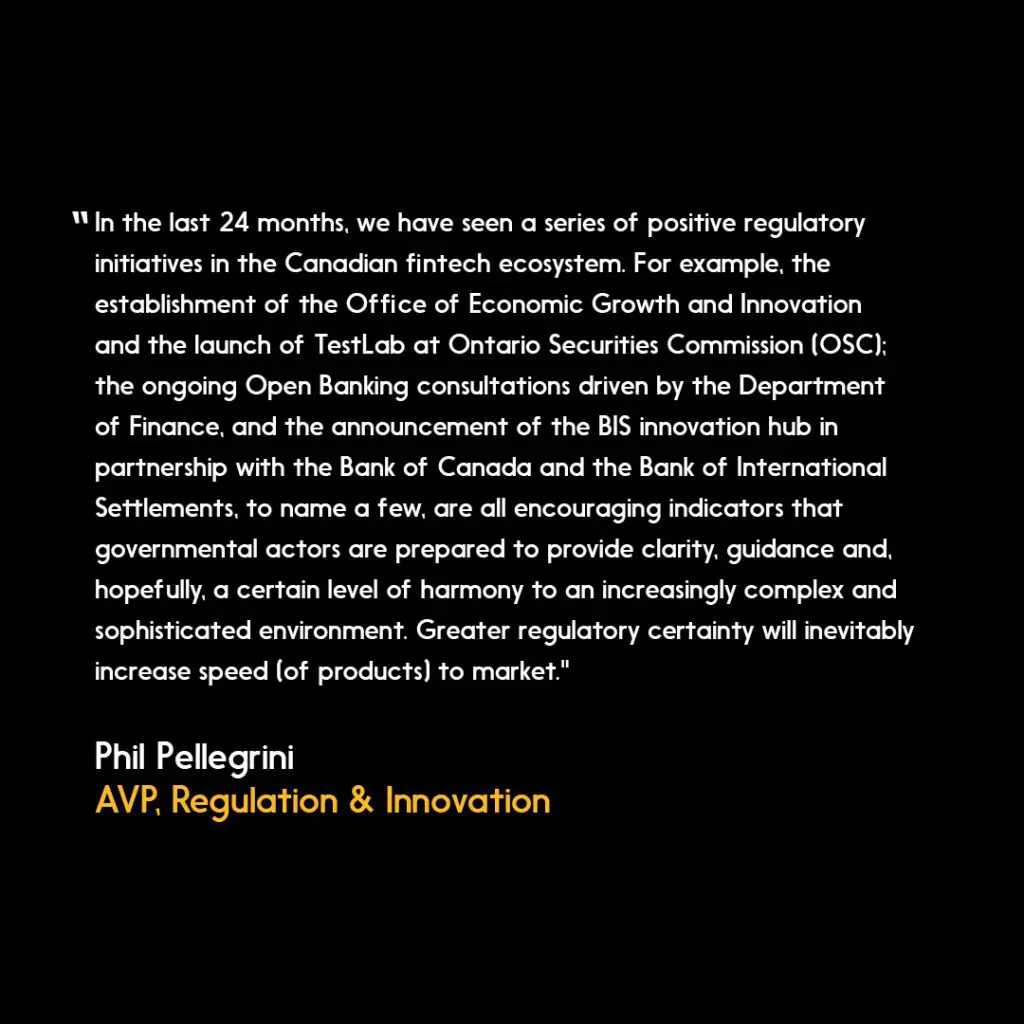
Engaging Ecosystems for Greater Access and Equity
Karen Deng, Director, Innovation & Ecosystem Engagement
In the face of continued unpredictability, we’ll need to create the conditions for innovation that benefits more people. Innovation ecosystems are loosely interconnected networks made up of academia, government, corporations, start-up accelerators, foundations, entrepreneurs, and individuals. These collectives create value by accelerating the development and commercialization of new products and services. The active flow of information and ideas among the participants can transform distant futures into present-day realities. Through these ecosystems, we can source and build upon new ideas, help diversify the economy, and accelerate solutions to real-world problems.
Similarly, the advent of Web 3.0 will allow people, businesses, and machines to trade value, information, and knowledge globally, with efficient machine-learning algorithms leading to the rise of fundamentally new markets and associated business models.
Access to information and platforms enables decision-making, exchange of ideas and ultimately, growth. With the right models of governance and partnerships, organizations can democratize access, change industry economics, and build rich ecosystems of collaboration and opportunity.

This disruption brings waves of opportunity – enabling life-improving technologies to become more accessible, affordable, customizable. In recent years, we have become increasingly aware of how people are shut out of the systems that allow access not only to financial services, but to new and innovative applications and services that make up the digital economy.
Left unchecked, this divide will grow, despite the knowledge that equity and full participation drives growth. Taking a citizen-first, ecosystem-driven approach, we must build the right models and systems to improve access, which ultimately drives innovative solutions for social and economic prosperity.
Collaborating to Create and Commercialize
Dinaro Ly, Head, Innovation Partnerships
To meet the fast-evolving needs of consumers and small business in today’s climate, we need to collectively leverage the full strength and potential of emerging technology. Specifically, we need to invest in methodology that puts various stakeholders in a room together to share, co-create, iterate, and ultimately commercialize new solutions.
This approach needs to go beyond the boundaries of legacy bi-lateral partnership models to more unconventional, multi-lateral sharing, collaboration, and co-creation methods with various stakeholders. This includes those both within and outside a particular industry, including regulatory and legislative bodies of government.
From healthcare to robotics, computing to sustainable technologies, Canada has a well established reputation for harnessing the power that public and private partnerships have in rapidly creating and commercializing innovation.
For our part, Interac is a keystone in bringing stakeholders together for critical initiatives in areas such as payments, consent, and open banking – meaty initiatives that cannot be tackled by one organization alone. Collaborating on these opportunities with the wider Canadian innovation economy will ensure that collectively, we create conditions where people, planet, and profit can all thrive.
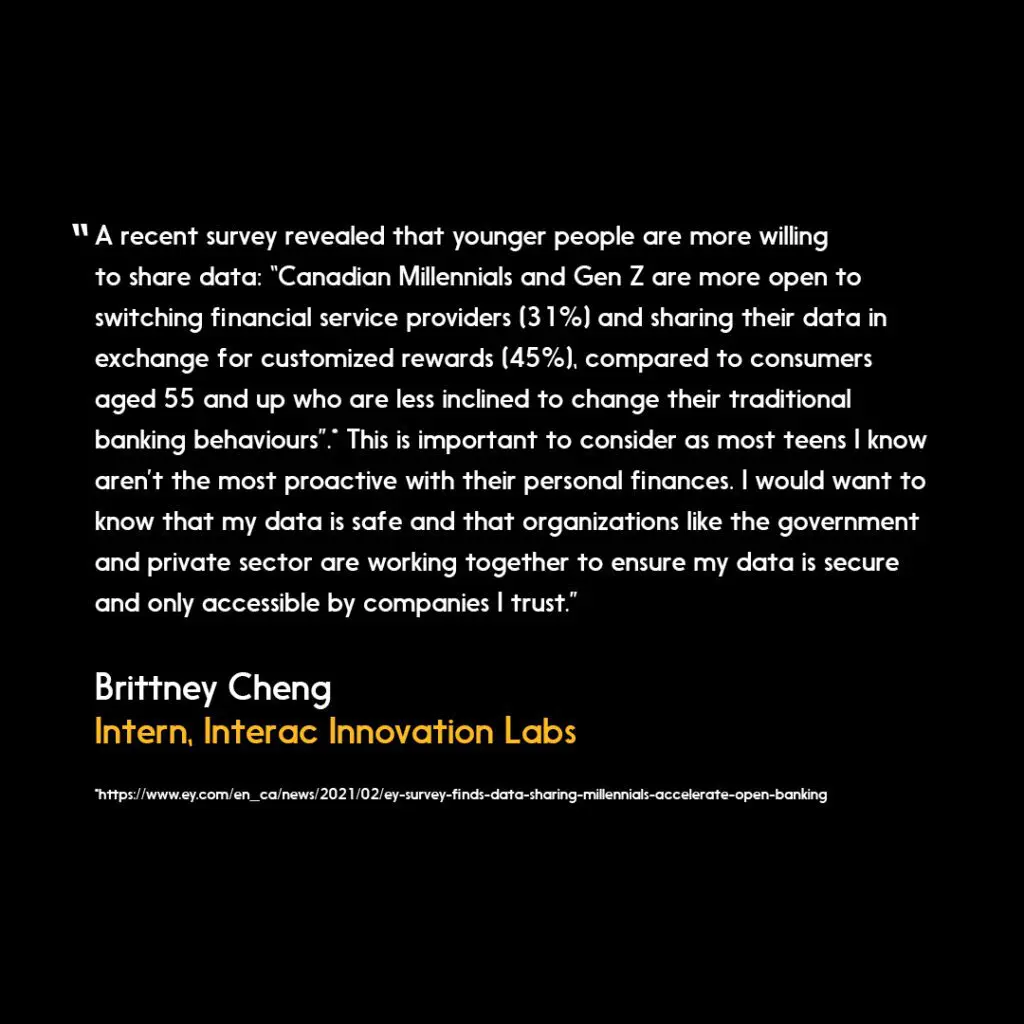
Through a “Minimum Viable Ecosystem” (MVE) approach, we bring together a small subset of partners and with their help, seek to influence, co-create, and expand collective knowledge in emerging trends, then share that knowledge and any outputs to relevant stakeholders. By doing this, we encourage greater collaboration across sectors and among partners towards a common solution: to grow strategic networks and create a stronger pan-Canadian innovation sector. The task is monumental, but we’re cautiously optimistic that with the right amount grit and collaboration, we can all rise to the task of providing a more accessible, and diverse set of products and services for all people and small businesses in Canada.
Striving for Common Good
Oscar Roque, VP, Strategy & Emerging Solutions
As we usher in 2022, uncertainty continues to be a recurring theme. But, when managed accordingly, with great uncertainty comes great opportunity. These opportunities can emanate from multiple vectors – social, technological, economic, environmental, political, and values. Major trends such as open banking, emergence of new digital assets such as central bank digital currencies and non-fungible tokens (NFTs), metaverses, individualism, community, and ultimately Web 3.0, will all change the way we learn, understand, and interact with the world around us.
It’s not about predicting the future. It’s about being prepared for it. To adapt to, respond to, and manage through requires a careful balance of the appropriate frameworks, engagement models and the right approach. We need to blend these together to not only give rise to innovation but harness it for social good.
Amidst ongoing uncertainty, we should strive towards common goals: build equity, good governance, and sustainable benefit right from the start and remove barriers in existing systems. Only then can we create better outcomes for society and the economy – and build the foundation for our future leaders.
